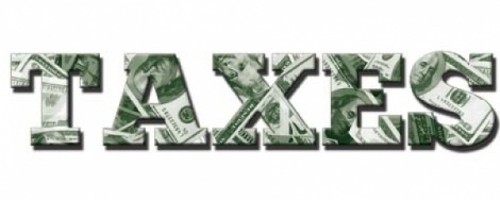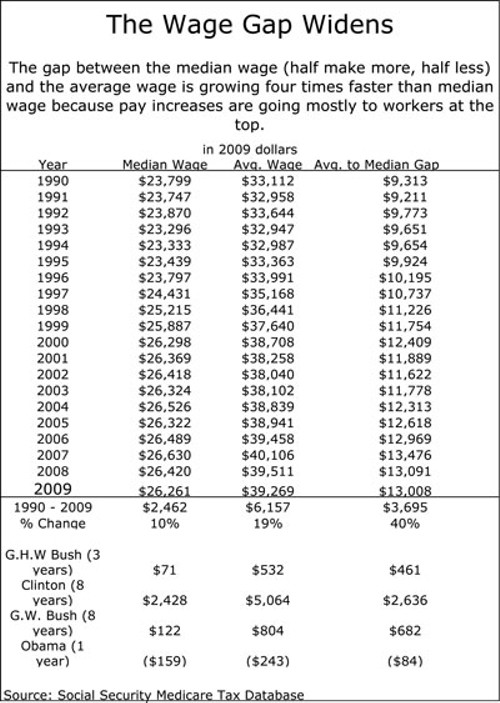9 Reasons the Rich Get Richer
A tax expert's story on tax myths may not be sexy, but it could arouse you—and not in a good way.
By David Cay JohnstonFor the past decade, we have doubled down on this theory of supply-side economics with the tax cuts sponsored by former President George W. Bush in 2001 and 2003, which President Barack Obama has agreed to continue for two more years.
You would think that whether or not this grand experiment worked would have been settled after three decades. You would think the practitioners of the dismal science of economics would look at their demand curves and the data on incomes and taxes and pronounce a verdict, the way Galileo and Copernicus did when they showed that geocentrism was a fantasy because Earth revolves around the sun (known as heliocentrism). But economics is not like that. It is not like physics with its laws and arithmetic with its absolute values.
Tax policy is something the Framers left to politics. And in politics, the facts often matter less than who has the biggest bullhorn.
The Mad Men who once ran campaigns featuring doctors extolling the health benefits of smoking are now busy marketing the dogma that tax cuts mean broad prosperity, no matter what the facts show.
As millions of Americans prepare to file their annual taxes, they do so in an environment of media-perpetuated tax myths. Here are a few points about taxes and the economy that you may not know, to consider as you prepare to file your taxes. (All figures are inflation-adjusted.)
1. Poor Americans do pay taxes.
Fox News host Gretchen Carlson said in 2010, “47 percent of Americans don’t pay any taxes.” John McCain and Sarah Palin both said similar things during the 2008 campaign about the bottom half of the American tax tier.
Ari Fleischer, the former Bush White House spokesman, once said, “50 percent of the country gets benefits without paying for them.”
Actually, they pay lots of taxes—just not lots of federal income taxes.
Data from the nonpartisan Tax Foundation shows that in 2008, the average income for the bottom level of taxpayers was $15,300.
This year, the first $9,350 of income is exempt from taxes for singles and $18,700 for married couples, just slightly more than in 2008. That means millions of the poor do not make enough money to owe income taxes.
But they still pay plenty of other taxes, including federal payroll taxes. Between gas taxes, sales taxes, utility taxes and other taxes, no one lives tax-free in America.
When it comes to state and local taxes, the poor bear a heavier burden than the rich in every state except Vermont, the nonpartisan Institute on Taxation and Economic Policy calculated from official data. In Alabama, for example, the burden on the poor is more than twice that of the top 1 percent. The one-fifth of Alabama families making less than $13,000 pay almost 11 percent of their income in state and local taxes, compared with less than 4 percent for those who make $229,000 or more.
2. The wealthiest Americans don’t carry the burden.
This is one of those oft-used canards. Sen. Rand Paul, the tea-party favorite from Kentucky, told David Letterman recently that “the wealthy do pay most of the taxes in this country.”
The Internet is awash with statements that the top 1 percent pays, depending on the year, 38 percent or more than 40 percent of taxes.
It’s true that the top 1 percent of wage earners paid 38 percent of the federal income taxes in 2008 (the most recent year for which data is available). But people forget that the income tax is less than half of federal taxes and only one-fifth of taxes at all levels of government.
Social Security, Medicare and unemployment-insurance taxes (known as payroll taxes) are paid mostly by the bottom 90 percent of wage earners. That’s because, once you reach $106,800 of income, you pay no more for Social Security, though the much smaller Medicare tax applies to all wages. Warren Buffett pays the exact same amount of Social Security taxes as someone who earns $106,800.
3. In fact, the wealthy are paying less in taxes.
The Internal Revenue Service issues an annual report on the 400 highest income-tax payers. In 1961, there were 398 taxpayers who made $1 million or more, so I compared their income tax burdens from that year to 2007.
Despite skyrocketing incomes, the federal tax burden on the richest 400 has been slashed, thanks to a variety of loopholes, allowable deductions and other tools. The actual share of their income paid in taxes, according to the IRS, is 16.6 percent. Adding payroll taxes barely nudges that number.
Compare that to the vast majority of Americans, whose share of their income going to federal taxes increased from 13.1 percent in 1961 to 22.5 percent in 2007.
(By the way, during seven of the eight Bush years, the IRS report on the top 400 taxpayers was labeled a state secret, a policy that Obama overturned almost instantly after his inauguration.)
Latest in Cover Story
Readers also liked…
-
Forget the family pedigree—Robert F. Kennedy Jr should not be the next president of the United States
Trojan Horse
- Jun 21, 2023
-
Women decry harassment and toxic culture at St. George auto dealership
Men at Work
- Oct 11, 2023





